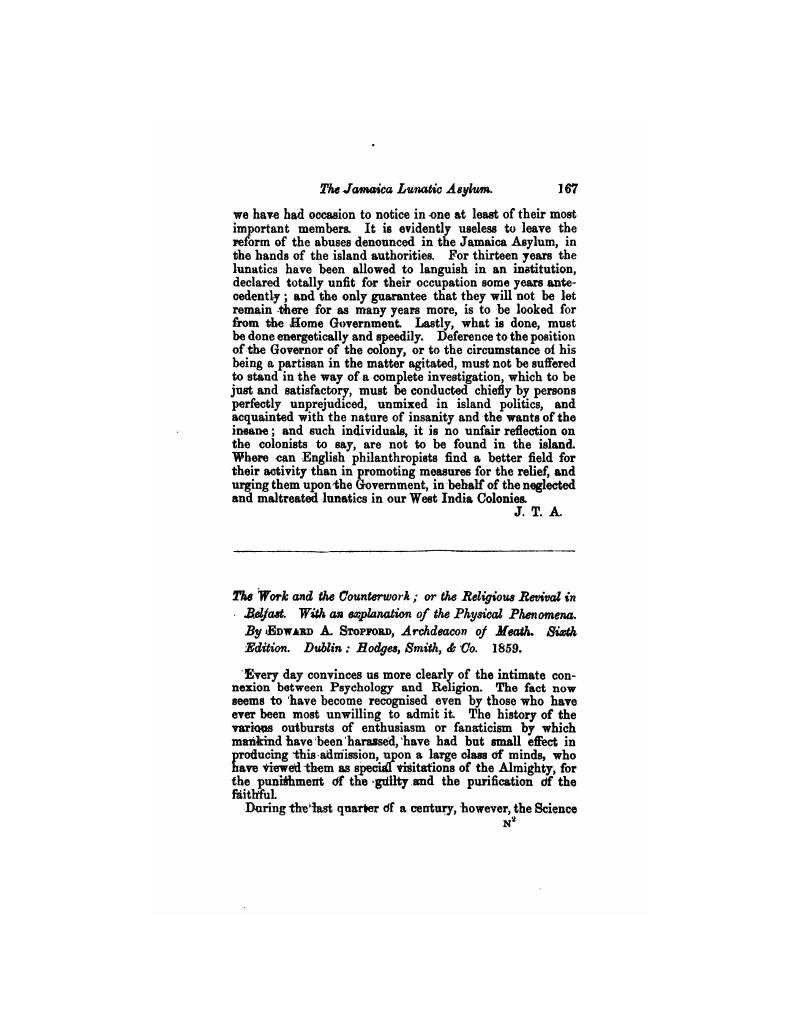No CrossRef data available.
Published online by Cambridge University Press: 19 February 2018

∗ Bayard Taylor. Google Scholar
∗ “When men are attacked by genuine hysterical fits (globus hyster, &c.) which certainly docs occur, they are, for the most part, effeminate men.”—Feuchtersieben. Google Scholar
“It is difficult to ascertain the proportion of male cases in Belfast, &c.; some have stated it to me as one in ten; others as one in twenty; I have heard no higher estimate of male cases. The authority for one in twenty appeared to me to be the best I met with.” p. 27. Google Scholar
∗ There is abundance of truth and wisdom in the following remark, by one of the ablest men of our times:—“I much fear that by attempting to form the mind and feelings on an exclusively religious type, and discarding those secular standards (as for want of a better name they may be called) which heretofore co-existed with and supplemented the Christian ethics, receiving some of its spirit, and infusing into it some of theirs, there will result, and is even now resulting, a low, abject, servile type of character, which, submit itself as it may to what it deems the Supreme Will, is incapable of rising to or sympathizing in the conception of Supreme Goodness.”—On Liberty, by J. S. Mill, p. 92. London, 1859. Google Scholar
eLetters
No eLetters have been published for this article.